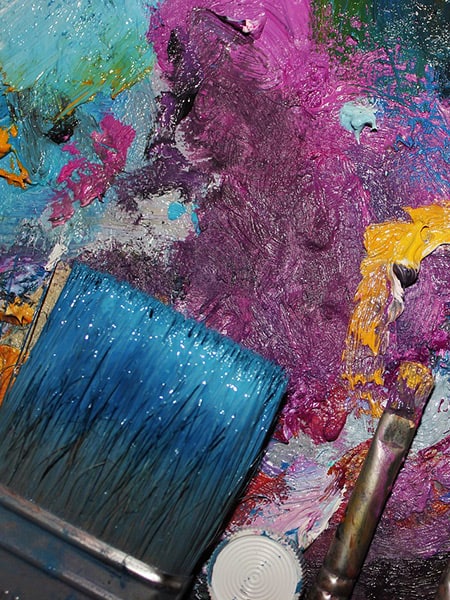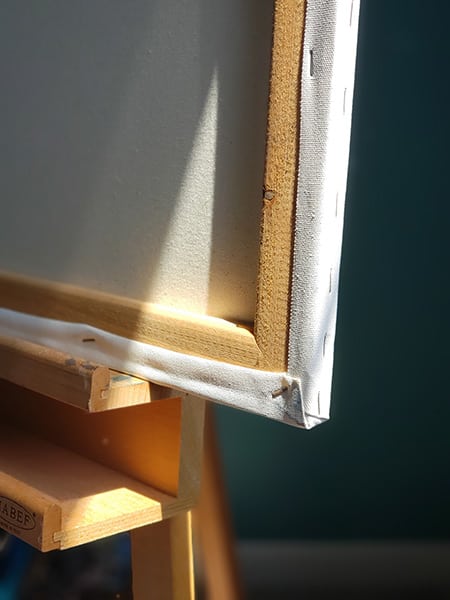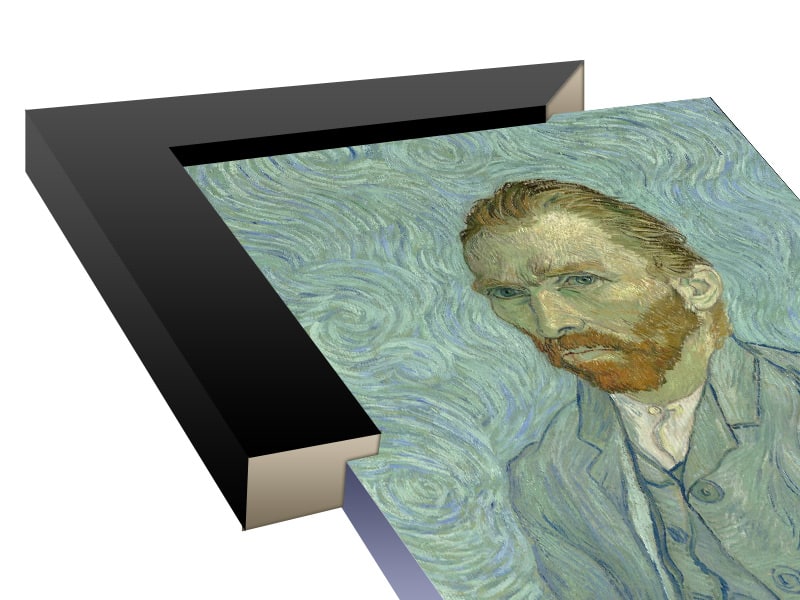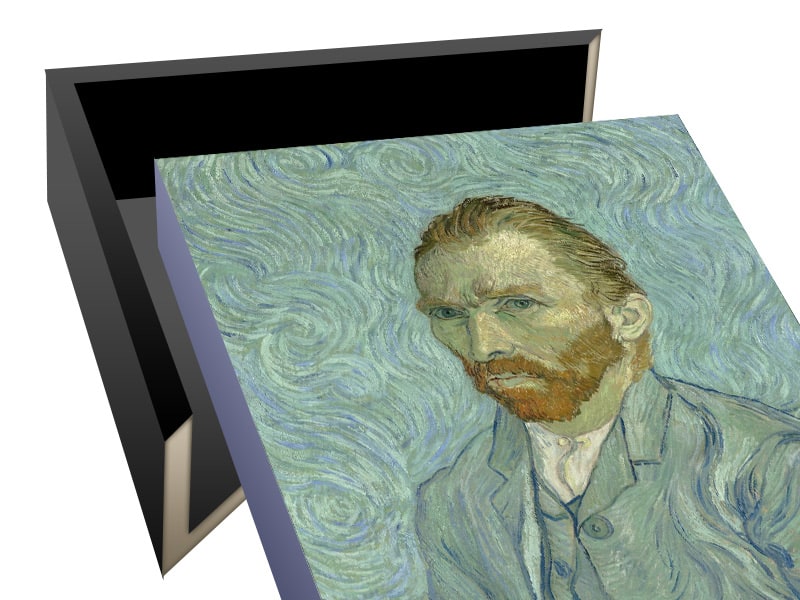Framing Oil Paintings
The Different Parts of a Framed Painting
Oil paintings have been around for centuries. You’ve seen them lining the halls of museums, but do you know what it takes to frame one properly? What pulls it all together? Framing an oil painting is probably one of the most ‘taken-for-granted’ processes of picture framing. Let’s break it down into its parts and pieces.
Is The Painting Dry?
You should not frame an oil painting until it is dry to the touch. If your painting requires a final varnish or glazing, you should not frame it until it is completely cured. Cured is not to be confused with Dry – oil paint can feel dryx but is not completely cured. Oil paint reacts with air causing it to solidify over time. This process can take anywhere from two months to several years; how long it takes depends a variety of factors such as the thickness of the paint applied.
Stretching The Painting
Most paintings are sold already wrapped around a wood frame, a method known as Stretching. Quite often an artist will stretch the canvas on a frame that is inexpensive, raw wood. These frames can damage the canvas painting over time. For a painting to last forever, it should be stretched on a good quality kiln-dried raised-lip stretcher bar. These stretcher bars come in a variety of sizes and depths. We can advise you about the quality of your stretched canvas.
Framing Options
Now that your painting has the proper structural mount, you can give it the finishing touch – the visible frame that surrounds it. Traditional picture frames are frequently used to frame paintings, but we also have Floater Frames made specifically for works on canvas. When should you use a Traditional or a Floater frame? Most of that decision depends on what you like or want.
- If an artist’s signature is covered by the ¼” lip of a traditional frame, use a floater frame.
- If the edges of the painting are unfinished or you can see staples, use a traditional frame.
- If your painting is not ‘square’ it will be very noticeable using a floater frame. Ask us how we can fix that.
Did you know you can attach a traditional frame to a float frame? It’s the best of both worlds. Ask us how.
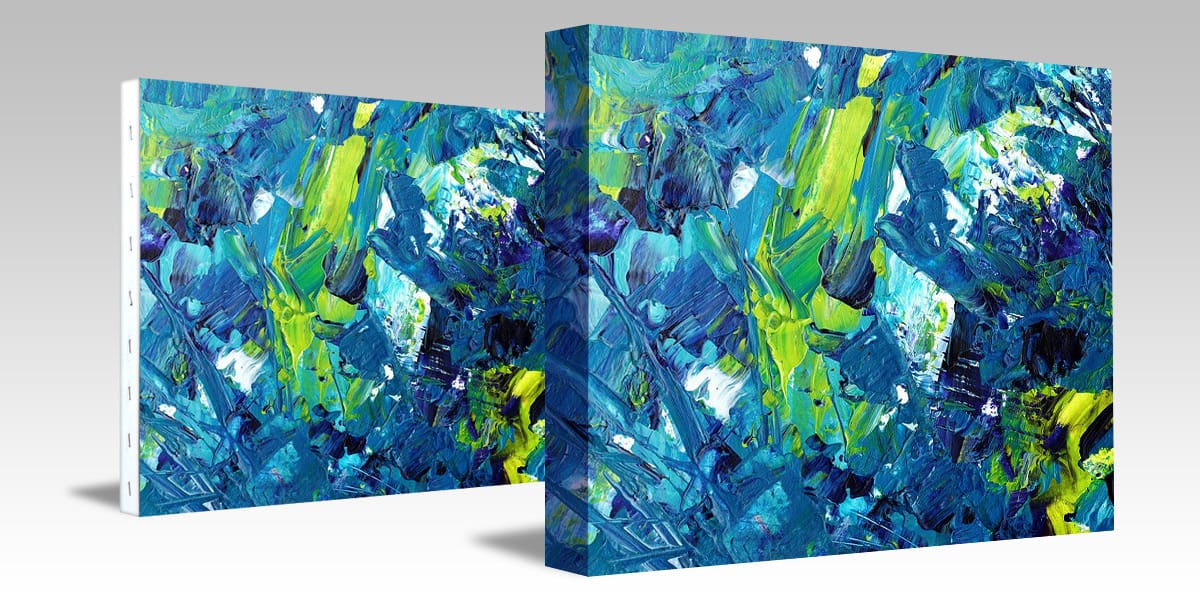
Gallery Wrap Vs. Traditional Stretch
With traditionally stretched canvases, the fabric is wrapped around shallow stretcher bars and secured to the sides. The edges are left unpainted and staples are visible. The canvas is usually intended to be framed before presentation. The shallow depth ensures the bars can fit inside normal frames.
With a gallery wrap, the fabric is wrapped all the way around the edges and secured to the backside of the stretcher bars. Edges are painted and finished; no mounting methods or staples are visible. The canvas is usually intended for frameless display. Deeper stretcher bars provide a more pronounced appearance.
What About Glass & Backing?
Usually oil paintings do not have glass because they are already varnished, providing a protective surface. If it is not varnished, glass would inhibit the oil from curing, if the paint hasn’t fully cured. You can put glass on an oil painting, but the paint can out-gas causing an etching on the glass. If the glass breaks, it can slice the canvas. Ask us what is best for your painting.
On the backside of your framed painting, there should be a ‘dust cover’ which is a sealed paper cover. This cover prevents dust from settling in and bugs from munching on your tasty painting. Now your oil painting is ready to outlast you!
Take Care With Your Painting
Oil paintings don’t need a lot of maintenance; dust with a dry soft cloth or dry paint brush if you have one. Keep it in a climate controlled home. Although oil paintings are pretty hardy, it is best to keep it out of direct sunlight.


